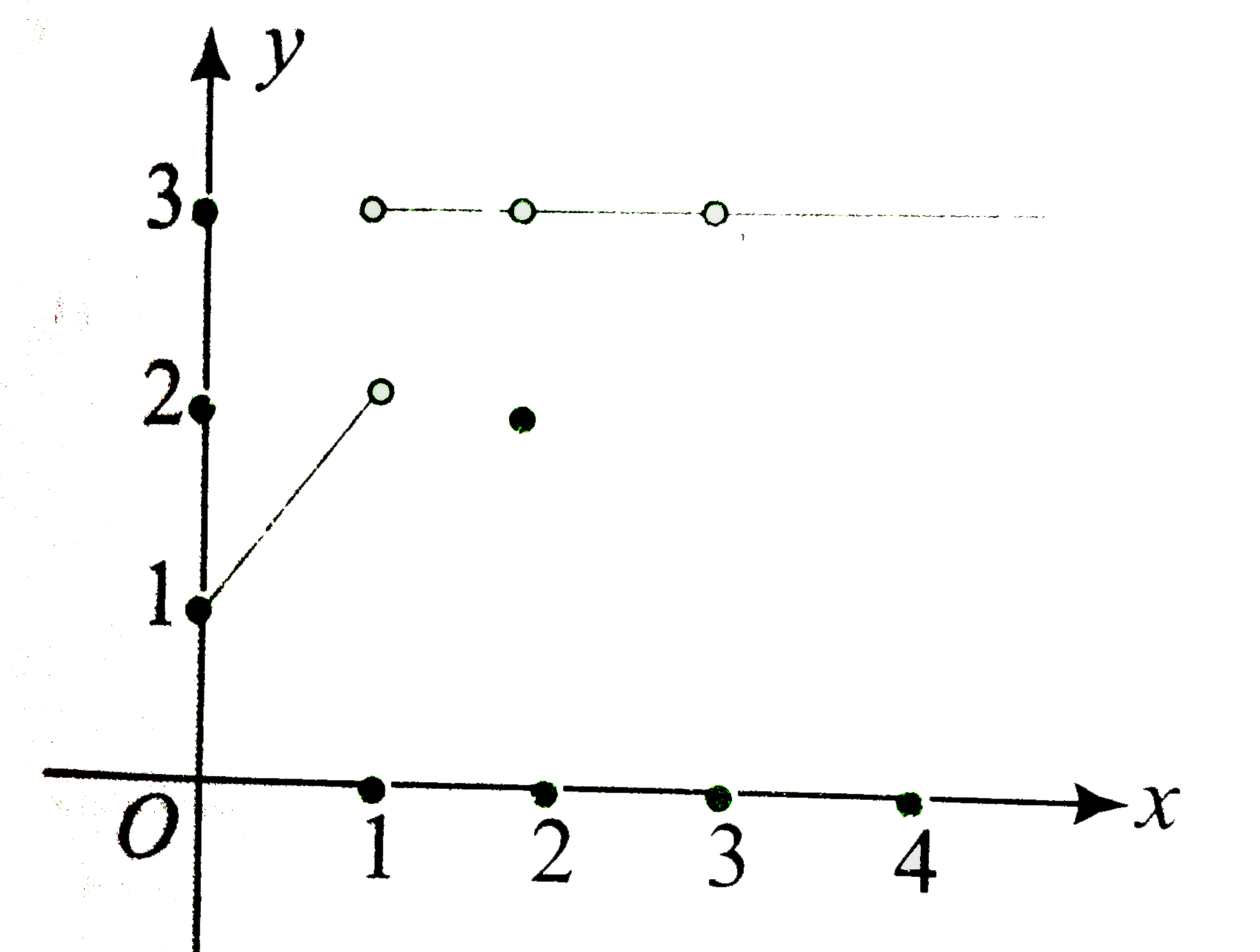Which of the following statements about the function y=f(x) graphed here are true, an which are false ? (a) limx→−1f(x)=1 (b) limx→2f(x) does not exist.
Step by step video & image solution for Which of the following statements about the function y=f(x) graphed here are true, an which are false ? (a) lim_(x->-1) f(x)=1 (b) lim_(x->2) f(x) does not exist. by Maths experts to help you in doubts & scoring excellent marks in Class 12 exams.
Updated on:21/07/2023Similar Questions
Which of the following statements about the function y=f(x) graphed here are true, an which are false ? limx→2f(x)=2
View SolutionWhich of the following statements about the function y=f(x) graphed here are true, an which are false ? (a) limx→−1f(x)=1 (b) limx→2f(x) does not exist.
View SolutionConsider the following graph of the function y=f(x). Which of the following is//are correct?

(a)limx→1f(x) does not exist.
(b)limx→2f(x) does not exist.
(c)limx→3f(x)=3.
(d)limx→1.99f(x)exists.
View SolutionConsider the following graph of the function y=f(x). Which of the following is//are correct?

(a)limx→1f(x) does not exist.
(b)limx→2f(x) does not exist.
(c)limx→3f(x)=3.
(d)limx→1.99f(x)exists.
View SolutionWhich of the following statement are true for the function f defined for −1≤x≤3 in the figure limx→−1+f(x)=1
View SolutionIf f(x)=|x−1|x−1 prove that limx→1f(x) does not exist.
View SolutionConsider the following graph of the function y=f(x). Which of the following is/are correct? fig. 1. (lim)x→1f(x) does not exist. 2.(lim)x→2f(x) does not exist. 3. (lim)x→3f(x)=3. 4. (lim)x−−→1.99f(x)= exists
View SolutionConsider the following graph of the function y=f(x). Which of the following is/are correct? fig. (lim)x→1f(x) does not exist. (lim)x→2f(x) does not exist. (lim)x→3f(x)=3
View SolutionWhich of the following statement(s) is (are) INCORRECT ?. (A) If limx→cf(x)andlimx→cg(x) both does not exist then limx→cf(g(x)) also does not exist.(B) If limx→cf(x)andlimx→cg(x) both does not exist then limx→cf'(g(x)) also does not exist.(C) If limx→cf(x) exists and limx→cg(x) does not exist then limx→cg(f(x)) does not exist. (D) If limx→cf(x)andlimx→cg(x) both exist then limx→cf(g(x))andlimx→cg(f(x)) also exist.
View SolutionStatement - 1: The function f(x)={x}, where {.} denotes the fractional part function is discontinuous a x=1 Statement -2: limx→1+f(x)≠limx→1+f(x)
View Solution
